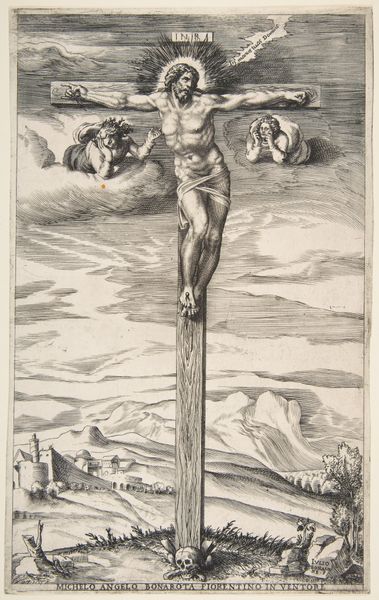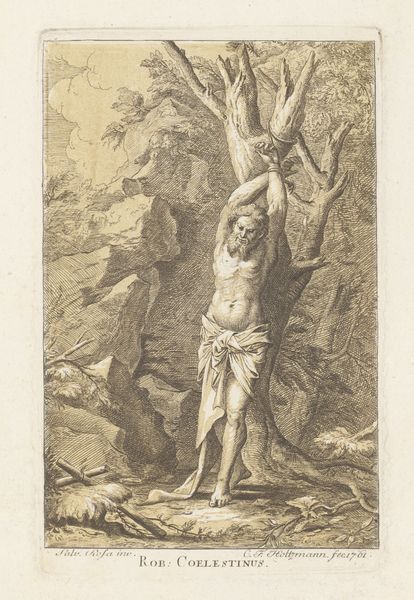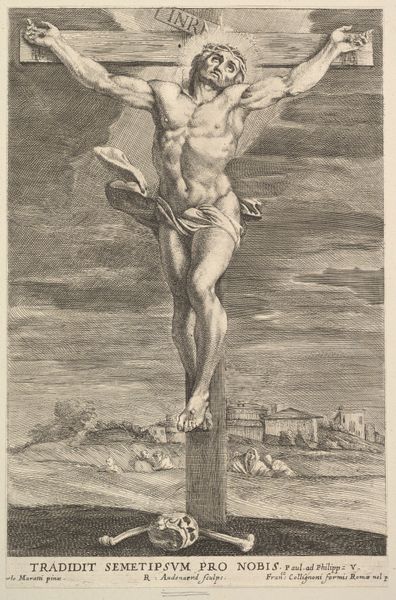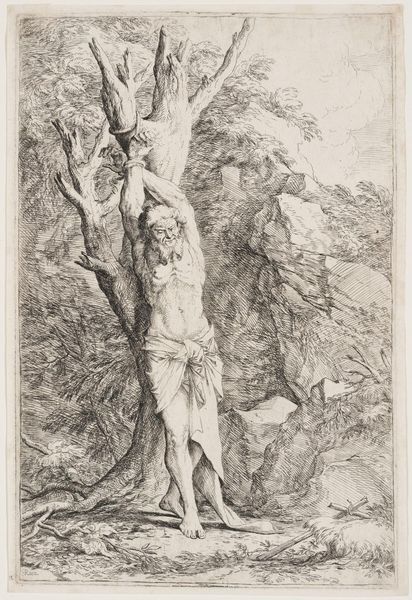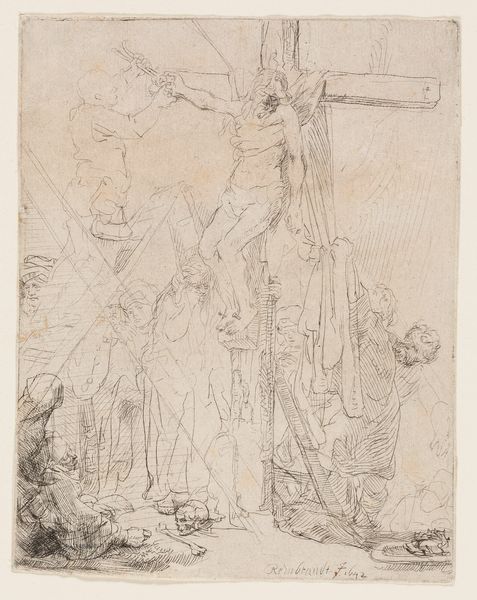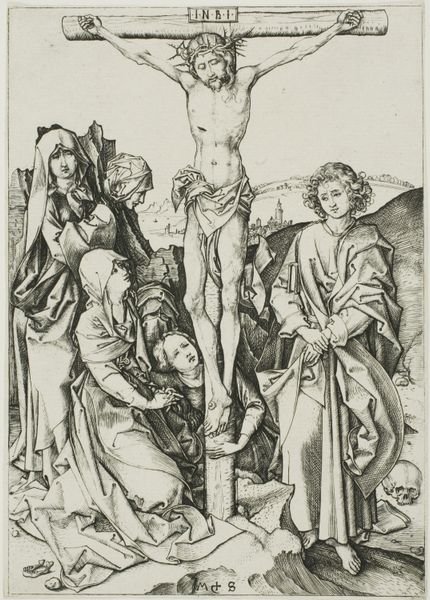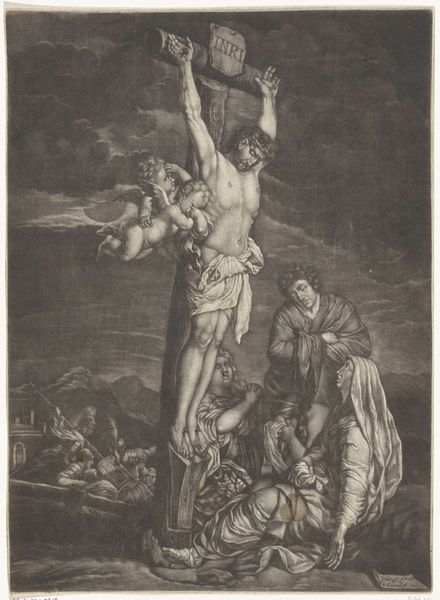
Dimensions: image: 7 5/8 x 4 3/4 in. (19.3 x 12 cm), trimmed to image
Copyright: Public Domain
Claude Gillot made this etching of the Crucifixion in France during the late 17th and early 18th centuries. Religious imagery, such as the crucifixion, held immense cultural and political weight, especially in a society deeply influenced by the Catholic Church. The image employs visual codes readily understood within its cultural context: Christ's suffering and the grief of those at the foot of the cross. During this time, religious institutions significantly influenced artistic production, often commissioning works to reinforce religious doctrine and social order. France's history of religious conflict also shaped the reception of such images. Gillot's interpretation of the crucifixion might be seen as either reinforcing traditional religious values or subtly critiquing the power structures of the time. Understanding the role of religious institutions, alongside social and political forces, helps us interpret this print. By exploring historical archives and theological texts, we can gain a deeper insight into the complex interplay between art, religion, and society during this period. Ultimately, art's meaning is contingent on its social and institutional context.
Comments
No comments
Be the first to comment and join the conversation on the ultimate creative platform.


